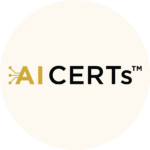
AI CERTS
2 months ago
🚨 Microsoft Flags 40 Jobs Most Exposed to AI Job Disruption
Microsoft has released a detailed study indicating that 40 specific occupations are highly vulnerable to AI job disruption. Based on real-world usage of Copilot and generative AI tools in business processes, the report sheds light on how AI is already affecting the workforce today. This analysis goes far beyond speculation—it offers actionable insights into where job loss risk is highest and where jobs remain relatively safe.

The Study Framework: Real Usage vs. Predictions
Microsoft’s AI job disruption study is grounded in data from over 200,000 real users interacting with Copilot and generative AI within enterprise environments. Each profession received an “applicability score”, reflecting how often AI tools were used to assist or automate core job tasks. This hands-on approach moves beyond hypothetical scenarios to identify actual exposure levels.
Top 20 Jobs at Greatest Risk of AI Disruption
These roles have seen the highest integration of AI tools, making them susceptible to generative AI impact:
- Interpreters and Translators
- Writers, Editors, Authors
- Travel Agents and Ticket Clerks
- Telemarketers and Call Center Staff
- Politicians’ Speech Writers and Analysts
- Public Relations Managers
- Content Creators and Bloggers
- CNC Tool Programmers
- Reception Clerks and Cashiers
- Radio D.J.s and Voice Actors
Jobs in this category are characterized by strong reliance on language, content generation, and structured communication—activities where Copilot usage data shows high frequency of generative AI involvement.
40 Jobs at Lowest Risk: Hard Skills and Human Touch Prevail
At the opposite end, the study highlights jobs where the AI job disruption impact is minimal:
- Home health aides, nursing assistants
- Construction laborers and roofers
- Dishwashers, janitors, housekeepers
- Landscapers, agricultural workers
- Industrial welders and machine operators
These jobs require physical dexterity, manual labor, or human-to-human interaction, making them less prone to automation even with advancing AI tools. For many of these roles, the generative AI impact remains subdued due to the hands-on, unpredictable nature of the work.
Why These Jobs? Understanding the Criteria
Microsoft identified job vulnerability based on:
- Task alignment to generative AI capabilities
- Frequency of AI tool usage in daily workflow
- Nature of communication-heavy vs. physical/manual job functions
Jobs with a high frequency of document generation, email composition, coding, or translation saw elevated AI exposure. Meanwhile, roles dependent on dexterity, sensory feedback, and real-time human presence showed resilience.
Broader Implications for Workers & Employers
- Employees in high-risk jobs must adapt by upskilling in AI literacy, prompt engineering, and strategic domain knowledge.
- Employers can reduce operational inefficiencies by integrating AI tools where applicable and retraining staff for more creative, analytical roles.
- Policy makers should invest in workforce transition programs—particularly for regions relying heavily on vulnerable occupations.
This shift is not just about replacement—it’s about reorientation toward jobs enhanced by AI rather than displaced by automation.
Tips for Mitigating AI Job Disruption
- Train employees in AI usage workflows, like using Copilot for drafting, summarizing, or ideating.
- Repurpose talent from routine roles into AI design, validation, and ethics oversight.
- Establish AI adoption frameworks that pair generative tools with creative or judgment-based tasks.
- Foster interdisciplinary leadership combining domain experts with AI-Powered decision support.
These steps ensure AI transformation enhances productivity while preserving workforce relevance.
Looking Ahead: Continued Workforce Change
As generative AI continues evolving, more jobs may shift into categories of higher AI applicability. The 40 roles identified today may serve as a snapshot—future assessments may widen or refine the list. AI job disruption is not static; it's a dynamic force reshaping how companies hire, train, and organize work.
Conclusion
Microsoft’s study offers a grounded warning—AI job disruption is real and present. The 40 roles most at risk mirror industries and tasks where generative AI tools like Copilot have already made inroads. As automation accelerates, investing in AI literacy and adapting to hybrid human-AI collaboration becomes critical—not optional.
👉 Interested in understanding how to navigate this shift?
- Explore our feature: “Skild AI Unveils Skild Brain: A Leap in Multipurpose Robotics”
- Enroll in AI Certifications from AI CERTs to stay future-ready.



